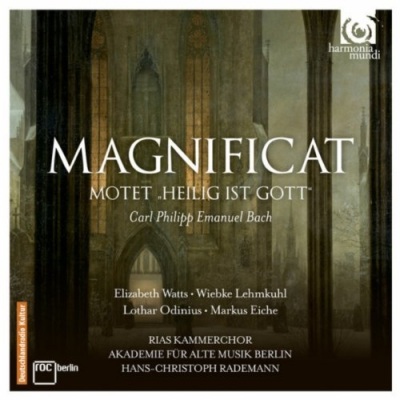
Carl Philipp Emanuel Bach: Magnificat; Motet "Heilig ist Gott"
Review by James Manheim The rather random trio of pieces on this release by Germany's RIAS Kammerchor and Akademie für alte Musik Berlin has an explanation: all were drawn from the program of a concert C.P.E. Bach presented in Hamburg in 1786 to benefit a group of doctors who treated poor patients without charge. The concert was meant to be a sort of survey of Bach's own career and the course of music in the 18th century in general; its first half covered J.S. Bach and Handel's Messiah, while the second part was devoted to C.P.E. himself and included the three works here, coming from the beginning, middle, and end of Bach's career (he died two years later). The big Magnificat, Wq 215, was C.P.E. Bach's first major choral work, composed in 1749. It lies somewhere between J.S. Bach and Vivaldi (in the arias), and it seems designed to show off the young composer's contrapuntal masters; at the time, the younger Bach hoped to succeed his father at the Thomaskirche in Leipzig. The work certainly does that, with an impressive final fugue (track 9), even if there's little about it that you remember when it's over. Still more imposing are the aria and chorus Heilig ist Gott, Wq 217, which was a celebrated work in its time but is nowadays rarely performed. None of the works on the album uses C.P.E.'s trademark chromaticism, and in this motet he specifically claimed to be trying to create vivid effects with diatonic harmonies. The only work that is at all unconventional is the late Symphony in D major, Wq 183/1, and there the distinctive Bach experimental touches lie in rhythm and especially instrumentation (the winds lead an existence largely independent from that of the strings) rather than in harmony. These aren't really characteristic Bach works, but apparently the composer himself thought that they were. For that reason, and for the clean singing of the RIAS Kammerchor, this is certainly worth the time of those interested in J.S. Bach's second son.
